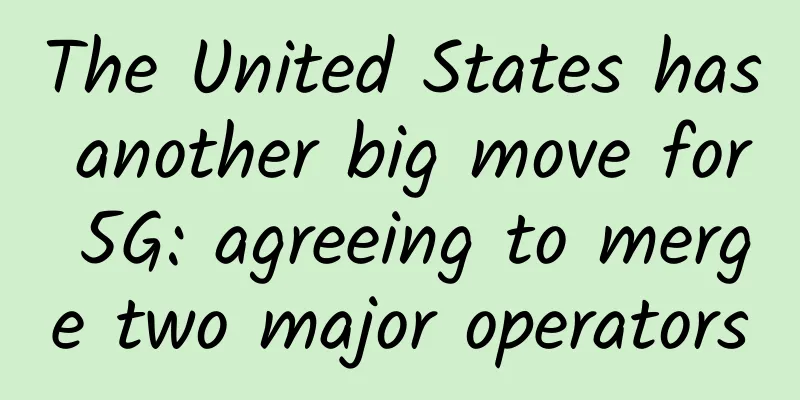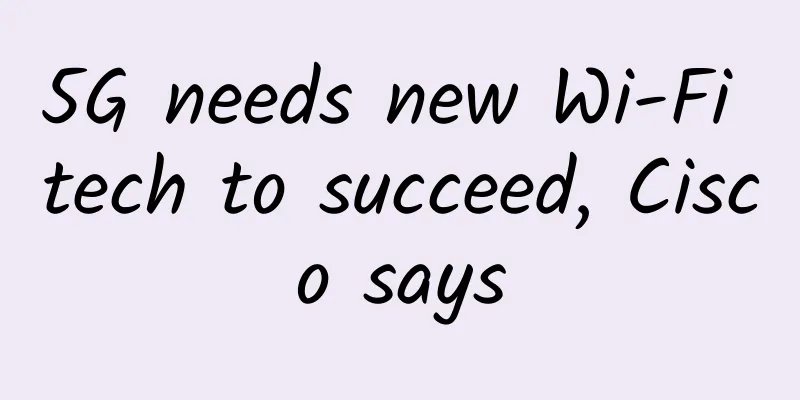The United States has another big move for 5G: agreeing to merge two major operators

|
The Trump administration has tried every possible means to compete for 5G leadership, from cutting taxes and abolishing network neutrality to releasing more spectrum, updating relevant regulatory systems, simplifying the approval process for base station construction, and even using the power of a country to suppress a company. Now, the US FCC is planning to use another big move - agreeing to the merger of T-Mobile, the third largest mobile operator in the United States, and Sprint, the fourth largest mobile operator. On May 20, US FCC Chairman Ajit Pai issued a statement saying he would approve the merger of Sprint and T-Mobile. The statement said: The two top priorities of the FCC are to narrow the digital divide in rural areas and drive 5G leadership, and the merger of T-Mobile and Sprint will greatly advance these key goals. However, the consent statement puts forward some construction conditions, requiring T-Mobile and Sprint to build a 5G network covering 97% of the US population within three years after the merger and 99% of the US population within six years; at the same time, the network must cover 85% of the US rural population within three years and 90% of the rural population within six years. FCC officials said that after the merger of T-Mobile and Sprint, a third-party testing company will be introduced to conduct road tests on its network to monitor whether it meets network construction requirements. Although the merger plan still needs to be approved by the U.S. Department of Justice, the FCC's public agreement indicates that the U.S. Department of Justice may also approve it, which means that the merger plan of T-Mobile and Sprint has taken a very important step forward. The merger of T-Mobile and Sprint is seen by the industry as one of the keys to determining whether the United States can lead the world in 5G. Currently, the other two major operators in the United States, Verizon and AT&T, are building 5G on the millimeter wave frequency band. The millimeter wave frequency band is high and the coverage range is extremely small. It can only be covered as a hotspot in cities and cannot form a nationwide 5G network with wide coverage. If T-Mobile and Sprint merge, Sprint will own the 2.5GHz mid-frequency band and T-Mobile will own the 600MHz low-frequency band and the millimeter wave high-frequency band. The two operators can use the low, medium and high frequency bands to form a three-layer network, with 600MHz as the coverage layer, 2.5GHz as the capacity layer, and millimeter wave as the high-capacity layer (hotspot), which will not only expand the network coverage but also increase the network capacity, thereby building a wide-coverage, large-capacity 5G network. The lack of mid-frequency bands and weak basic coverage are the biggest weaknesses of US 5G compared to China's 5G, and the merger of T-Mobile and Sprint can just make up for this weakness. In fact, T-Mobile and Sprint repeatedly compared China's 5G to the application reports submitted to regulators. For example, the following report points out that despite the FCC's progress in infrastructure reform and spectrum auctions, China remains the clear leader in the 5G race with some key advantages. Without radical action, the United States will be unable to stop China's progress. In terms of spectrum, the report believes that mid-frequency bands will play a vital role in 5G coverage and capacity. Chinese operators have a large number of mid-frequency bands at 2.6 GHz, 3.5 GHz and 4.5 GHz, while the United States 5G is seriously lacking in mid-frequency bands. Therefore, only by merging T-Mobile and Sprint and taking advantage of the complementary low, medium and high frequency bands of the two operators can a nationwide 5G network be quickly deployed. In terms of infrastructure, China Tower owns more than 1.9 million sites, while all mobile operators and tower companies in the United States own only 200,000 sites; in the past three years, China Tower has built more than 350,000 new towers, while the United States has less than 30,000. China has 14.1 towers per 10,000 people, while the United States has only 4.7; China's FTTH coverage rate is 88%, while the United States is only 27%. The report points out that since China already has a dense 4G network, and 5G networks are built by adding 5G equipment to existing 4G sites, China can quickly launch a nationwide 5G network, while the United States is far behind in infrastructure and the cost of new construction is too high, making it difficult to quickly deploy a wide-coverage 5G network. Therefore, the report believes that only if the two operators merge and form complementary network resources can a denser 5G network be quickly built. |
<<: Everyone says China is strong in 5G, but what makes it so strong? Why is it so strong?
>>: I experienced 5G network on Beijing Line 16 for a while and used up 7GB of data
Recommend
Looking forward to the love and hate of IPv6 deployment in the new Internet era
With the explosive development of the Internet, t...
Deepin Technology participated in the national highway video networking work research meeting
On November 28, 2019, in order to accelerate the ...
Huawei: 5G+AI opens a new era of smart city twins
On November 15, the "Huawei Smart City Summi...
A must-have for 5G engineers! A complete list of 5G protocols
The three major operators have already commercial...
Expert Viewpoint: Looking into the future of the Internet
How will businesses’ approach to networking evolv...
RAKsmart Bare Metal Cloud/Cloud Server/VPS 30% off, Dedicated Server Limited Flash Sale Starting from $30/month
Coinciding with the Chinese New Year, RAKsmart ha...
Smart City - Application Areas of 5G
Smart city is one of the three major application ...
Mobile phone roaming has finally become history, what about IoT roaming?
As early as this year's "Two Sessions&qu...
Key Points in CCIE Exam - MPLS VPN Technology
MPLS VPN technology is a key point in the CCIE ex...
How data centers work today and in the future
The data center of the future will rely on cloud ...
Report: Amazon, Microsoft and Google account for half of all major hyperscale data centers
Amazon, Microsoft and Google account for more tha...
Comparative analysis of five smart home wireless technologies: KNX RF, Zigbee, Z-Wave, WiFi, BLE-MESH
Smart home solutions need to comprehensively cons...
How many hosts can 100 IPs serve?
I have calculated this once in an old article, bu...
Jiaxing Cloud Road: Tongxiang Smart Education and the 6 Major Projects Behind It
When the thousand-year-old ancient town Wuzhen wa...
What is the difference between localhost and 127.0.0.1? Do you know?
When front-end developers are debugging locally, ...









